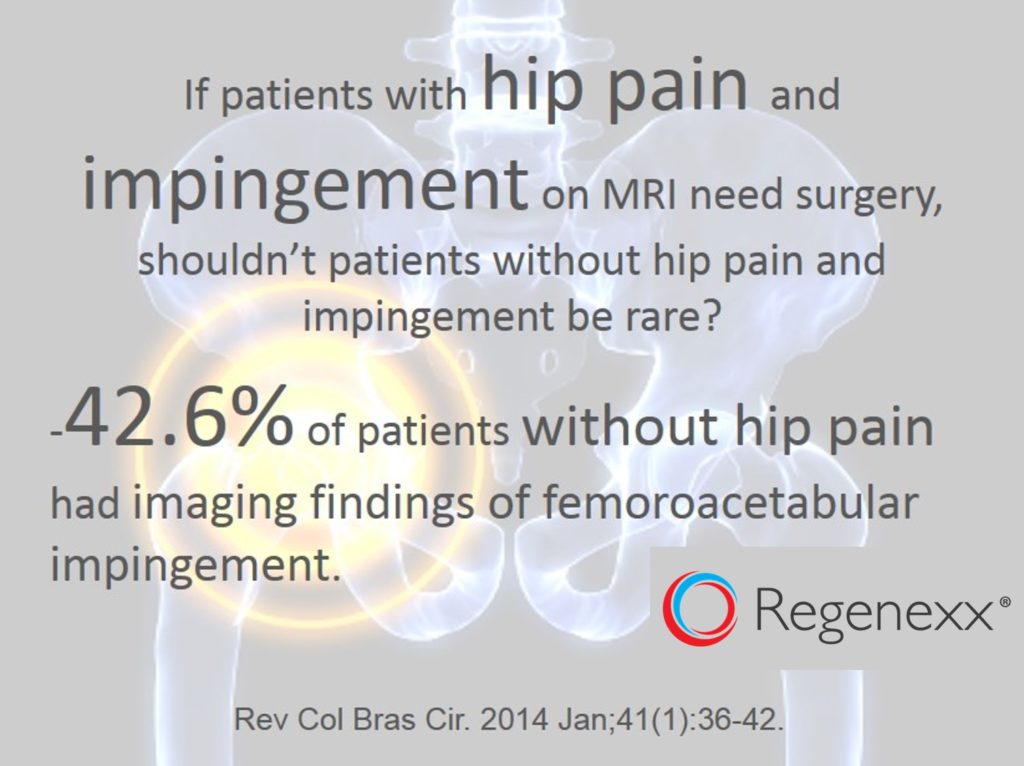Worrying about Hip Impingement Surgery Recovery? Loads of Patients without Pain Have Hip Impingement
Hip impingement surgery recovery will be a big concern for the tens of thousands of patients who will have hip arthroscopy this year. However, is all of this surgery really necessary? I like to break complex issues into one simple question. In the case of hip arthroscopy to treat Femoroacetabular Impingement (FAI), it comes down to this: If hip impingement is the cause of hip pain and arthritis and the offending impinging structures need to be surgically removed, shouldn’t patients without hip pain and hip impingement on MRI be rare?
According to a new study (and many other older studies), this isn’t the case. The concept of hip impingement is pretty basic-a bone spur is in the way of normal hip motion and this can wear away at the hip cartilage leading to arthritis. The surgical solution is to cut away the offending bone spur. But what if the bone spur was protecting the hip rather than destroying the joint?
A recent longitudinal study confirmed that for the most common type of hip impingement, the bone spur was in fact protecting the joint from getting more arthritis. In addition, if the need for these surgeries is so pressing, there should be very few patients walking around who have impingement and no hip pain. Is this the case?
Not so much. I’ve blogged before on a study which showed that an awful lot of patients met one or more criteria for hip impingement despite having no hip pain. Now this new study again questions the dogma that impingement causes pain and arthritis. The research team from Brazil looked at the imaging studies of patients who were between the ages of 40-60 without any report of hip pain or problems (164 hips). What was very concerning was that evidence of impingement was found in 43% of the hips! Again, if this is a surgical problem that needs to be fixed because patients with impingement have pain and arthritis, shouldn’t it be rare to find middle aged patients with impingement who have never had hip pain? If the study focused on much younger patients who had impingement and no pain, one could theorize that their impingements would eventually lead to pain and arthritis as they aged.
The upshot? Routine surgery to treat hip impingement has become increasingly common. The decision is based on two key factors: the presence of hip impingement on an image and hip pain. What if one of those two criteria was common in patients who didn’t have hip pain? Wouldn’t that call into question the rationale for surgically removing the impingement in a big surgery?

If you have questions or comments about this blog post, please email us at [email protected]
NOTE: This blog post provides general information to help the reader better understand regenerative medicine, musculoskeletal health, and related subjects. All content provided in this blog, website, or any linked materials, including text, graphics, images, patient profiles, outcomes, and information, are not intended and should not be considered or used as a substitute for medical advice, diagnosis, or treatment. Please always consult with a professional and certified healthcare provider to discuss if a treatment is right for you.
